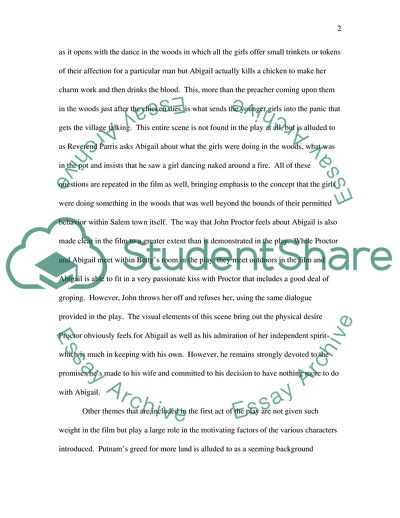Cite this document
(Comparison of the Play and the Film: The Crucible Movie Review Example | Topics and Well Written Essays - 1750 words, n.d.)
Comparison of the Play and the Film: The Crucible Movie Review Example | Topics and Well Written Essays - 1750 words. https://studentshare.org/visual-arts-film-studies/1716783-compare-and-contrast-the-play-rendering-and-the-film-rendering-of-the-crucible
Comparison of the Play and the Film: The Crucible Movie Review Example | Topics and Well Written Essays - 1750 words. https://studentshare.org/visual-arts-film-studies/1716783-compare-and-contrast-the-play-rendering-and-the-film-rendering-of-the-crucible
(Comparison of the Play and the Film: The Crucible Movie Review Example | Topics and Well Written Essays - 1750 Words)
Comparison of the Play and the Film: The Crucible Movie Review Example | Topics and Well Written Essays - 1750 Words. https://studentshare.org/visual-arts-film-studies/1716783-compare-and-contrast-the-play-rendering-and-the-film-rendering-of-the-crucible.
Comparison of the Play and the Film: The Crucible Movie Review Example | Topics and Well Written Essays - 1750 Words. https://studentshare.org/visual-arts-film-studies/1716783-compare-and-contrast-the-play-rendering-and-the-film-rendering-of-the-crucible.
“Comparison of the Play and the Film: The Crucible Movie Review Example | Topics and Well Written Essays - 1750 Words”. https://studentshare.org/visual-arts-film-studies/1716783-compare-and-contrast-the-play-rendering-and-the-film-rendering-of-the-crucible.


